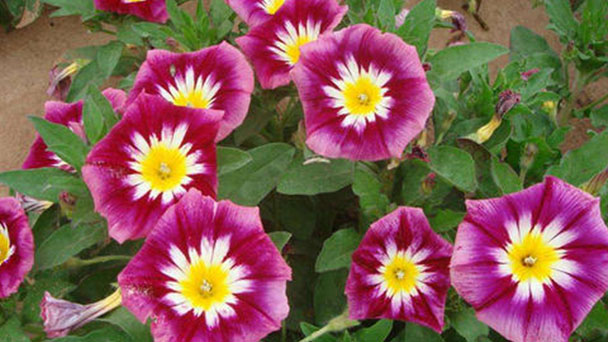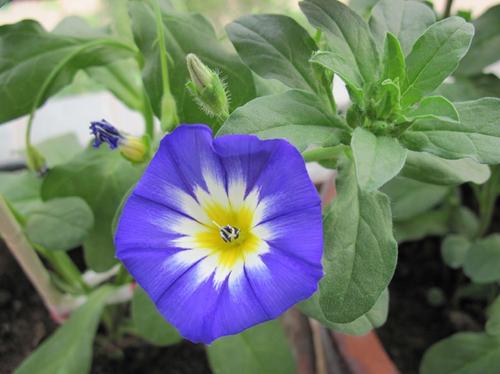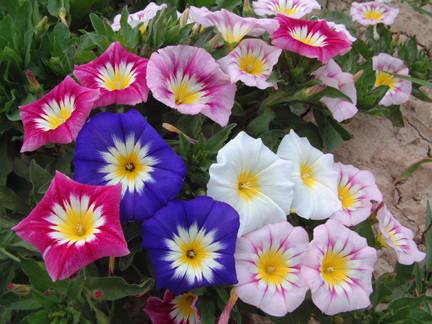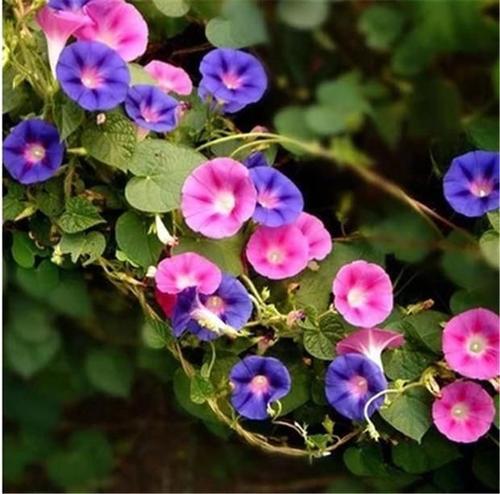Morning glory (Convolvulus) profile
Written by Maggie
Oct 30 2021

Morning glory (Convolvulus), also called bindweed, is native to the Mediterranean coast, north Africa. Morning glory is a biennial herb, about 20 ~ 40 cm plant height.
Morning glory picture

Morphology of morning glory
Morning glory is an annual or perennial herb, with rising stems; Leaves are narrowly orbicular to spatulate, apex obtuse, stipitate, entire; The neck is short, the flowers are sparse, the cyme is solitary.
Corolla of Morning glory is bell-shaped or funnel-shaped, blue, red, white edge, throat yellow, annual, stem upright or climbing up, branching and drooping, safflower yellow heart, blue yellow heart color, flower trumpet shape, high 20 CMS, flower diameter 5 ~ 6 CMS, 3 ~ 5 months sowing, flowering 6 ~ 7 months, more in the morning open.
The ecological habits of morning glory
Morning glory is warm, wet and sunny. The soil requirements are not strict.
How to grow and care for morning glory
1. Watering
Morning Glory has a high demand for water, and if it is not watered for a long time, Morning Glory can easily become shrivelled and dull.Of course, do not water the Morning Glory too frequently, because too much watering will cause water to appear in the pot soil.
These water will not only affect the respiration of the roots, but also cause root rot because of long-term soaking.In the process of maintaining Morning Glory, we need to ensure the wetness of the soil in the basin at all times, and implement the principle of watering thoroughly when wet and dry. (Find more Climbing Plants with Flowers here.)
In this way, it can grow better and produce beautiful flowers.
2. Light
The seemingly unremarkable sun is a natural source of energy and an important factor in determining plant growth. They like to grow in full sun,
Sunshine is more enough flower opens color is more flowery more beautiful, bring extremely strong visual impact to the person.Usually, during the maintenance process, we need to ensure 6-8 hours of sunshine for Morning Glory every day.
Photosynthesis with sunlight. On the contrary, if the light time is insufficient, Morning Glory will not only have difficulty in flowering, but also grow slowly, greatly prolonging its flowering period.
3. Nutrient
In addition to water and sunshine, fertilizer nutrients are also indispensable for the growth of general flowers and plants. Good growth also requires sufficient nutrients, so nutrients should be supplemented in time.
But it is not difficult to fertilize the Morning glory. Just remember to fertilize the plant a month before it grows. Don't fertilize it too much to ensure normal growth. Fertilize it every ten or fifteen days before the Morning glory. Morning Glory is beautiful in color, whether it is used as a climbing hedge or a greening material to cover slopes, fences and trellises,
Potted and flowerbed applications have a strong ornamental value.
4. Soil
Morning Glory likes fertile sandy soil with good drainage and air permeability. When we potted at home, the soil we formulated needed to be loose and breathable for drainage.
If it is ground planting, we can dig the soil loose, and then apply some fertilizer as the base fertilizer, which is conducive to the nutrients needed for the growth of Morning Glory.
The propagation of morning glory
Morning glory seeds most commonly used method of breeding, seeding time about early in the spring and early summer are available, germination about 18 ~ 25 ℃ warm, can be broadcast in seedling dish and overlying thin soil, keep the soil moist, but in transparent plastic seedling tray covered, to keep humidity, but the dish can't water, about 7 ~ 14 days can germinate, at this time to remove the plastic sheeting, light bright place, for the futaba 3 ~ 5 pieces, can be transplanted in the basin, but the three color in yan rootstocks is not resistant to transplant, therefore careful attention should be paid at the time of transplantation is, also can live to begin in the basin.

Morning glory pest & disease
Pests
Morning glories are fast growing and are rarely bothered by pests to a significant extent. However, the following pests may be seen feeding on the vines:
Aphids
Leaf miner
Spider mites
Caterpillars (leaf cutters)
Disease/Fungus
Rust
Fungal leaf spots
Fusarium Wilt
Morning glory varieties
‘Heavenly Blue’ are the classic morning glories with the rich azure (blue) flowers with white throats. It climbs to 12 feet.
‘Scarlett O’Hara’ has bright red flowers with a white throat. It climbs to 15 feet.
The distribution region of morning glory
Morning glory is native to the Mediterranean coast of North Africa.
The role of morning glory
Greening effect
Morning glory is coniferous herb, suitable for landscaping and greening.
Garden use of morning glory
Morning glory is suitable for making fences, fences, scaffolds of afforestation, beautification materials.

Read Next:
Top 20 Climbing Plants with Flowers for Your Garden
Latest Updated
- Benefits of Bugleweed - 7 Science-backed Health Benefits
- Bugleweed Dangers & Side Effects - Is It Poisonous?
- How to Plant Evergreen Trees - What You Should Know
- When to Plant Evergreens - Grow Guide for Evergreen Trees
- 12 Wonderful Evergreen Shrubs for Your Garden
- 12 Popular Evergreen Plants with Pictures for Beginners
- When And How To Prune A Lilac Bush Like a Pro
- How to Grow & Care for Lilac Vine (Hardenbergia Violacea)
- Japanese Lilac Tree (Syringa Reticulata) Care & Propagation Guide
- Shumard Oak Pros and Cons - What to Know
Popular Articles
- Winter maintenance of Antirrhinum Majus
- How to Grow Terminalia Mantaly Tree
- How to Grow and Care for Crossostephium Chinense
- How to grow Antirrhinum Majus in spring
- Peristeria Elata (Dove Orchid) Profile: Info & Care Guide
- Underwatered Snake Plant (Sansevieria Trifasciata) - Signs And How To Fix
- How to Care for Brazilian Jasmine Plant (Mandevilla Sanderi)
- How to Grow & Care for Graptopetalum Purple Delight in Summer
- Rosa Chinensis (China Rose): Plant Growing & Care Tips
- How to Care for Baby Sun Rose (Aptenia Cordifolia)